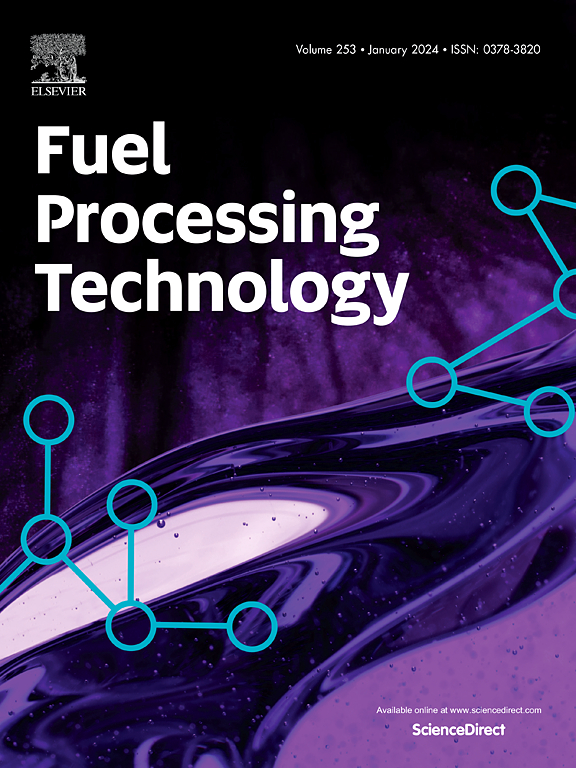Numerical investigation on high temperature direct water injection characteristics within hydrogen/oxygen/argon premixed combustion process
IF 7.2
2区 工程技术
Q1 CHEMISTRY, APPLIED
引用次数: 0
Abstract
Hydrogen-fueled argon power cycle (H2-APC) is a novel power system with high efficiency and zero emission by utilizing argon/oxygen mixture with high specific heat ratio as the working fluids. However, H2-APC engines suffer from the challenge of knock suppression. Direct water injection (DWI) is an effective method to inhibit detonation. Spray morphology has a significant impact on the effectiveness of DWI and the study of spray characteristics in hydrogen/oxygen/argon premixed combustion atmosphere is critical. Based on a three-dimensional computational model built by the test bench data, this paper explores the DWI characteristics within hydrogen/oxygen/argon premixed combustion atmosphere and the effect of DWI on the combustion process. The results show that as the ambient temperature increases, the ambient density decreases and the SMD enlarges. The difference in spray morphology is small in the high-temperature and high-pressure environments after combustion. As the ambient pressure elevates, both the jet SMD and penetration reduce, and the evaporated mass improves. In addition, the majority of the water spray in contact with flame will evaporate rapidly due to the high temperature. Some of the liquid water on the outside of spray will evaporate owing to the heat, while the remaining portion will crack into OH reactive groups. The results can serve as an effective guide for the high efficiency operation scheme of H2-APC engines.
氢/氧/氩预混燃烧过程高温直接注水特性数值研究
氢燃料氩气动力循环(H2-APC)是一种新型动力系统,利用高比热比的氩气/氧气混合物作为工作液体,具有高效率和零排放的特点。然而,H2-APC 发动机面临着抑制爆震的挑战。直接喷水(DWI)是抑制爆震的有效方法。喷雾形态对 DWI 的效果有重要影响,因此研究氢气/氧气/氩气预混合燃烧气氛中的喷雾特性至关重要。本文基于试验台数据建立的三维计算模型,探讨了氢气/氧气/氩气预混合燃烧气氛中的 DWI 特性以及 DWI 对燃烧过程的影响。结果表明,随着环境温度的升高,环境密度降低,SMD增大。在高温高压环境中,燃烧后的喷雾形态差异很小。随着环境压力的升高,喷射 SMD 和穿透力都会减小,蒸发质量也会提高。此外,由于温度较高,大部分与火焰接触的水雾会迅速蒸发。喷雾外侧的部分液态水会因受热而蒸发,而剩余部分则会裂解成 OH 反应基团。这些结果可为 H2-APC 发动机的高效运行方案提供有效指导。
本文章由计算机程序翻译,如有差异,请以英文原文为准。
求助全文
约1分钟内获得全文
求助全文
来源期刊

Fuel Processing Technology
工程技术-工程:化工
CiteScore
13.20
自引率
9.30%
发文量
398
审稿时长
26 days
期刊介绍:
Fuel Processing Technology (FPT) deals with the scientific and technological aspects of converting fossil and renewable resources to clean fuels, value-added chemicals, fuel-related advanced carbon materials and by-products. In addition to the traditional non-nuclear fossil fuels, biomass and wastes, papers on the integration of renewables such as solar and wind energy and energy storage into the fuel processing processes, as well as papers on the production and conversion of non-carbon-containing fuels such as hydrogen and ammonia, are also welcome. While chemical conversion is emphasized, papers on advanced physical conversion processes are also considered for publication in FPT. Papers on the fundamental aspects of fuel structure and properties will also be considered.
 求助内容:
求助内容: 应助结果提醒方式:
应助结果提醒方式:


